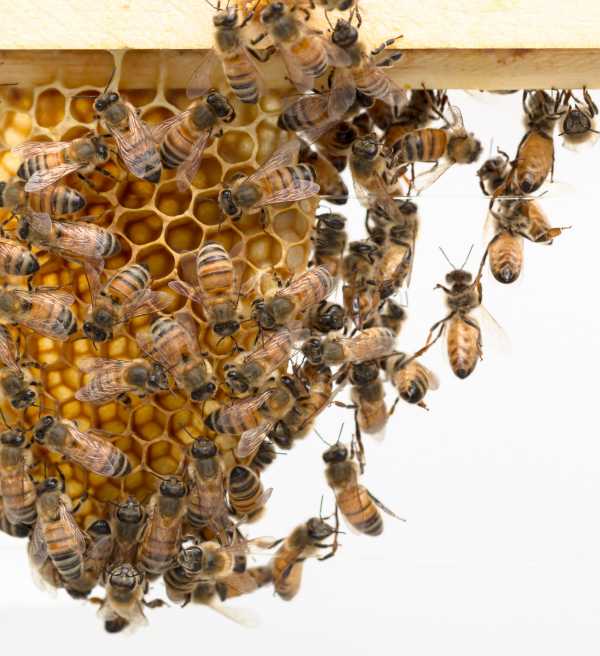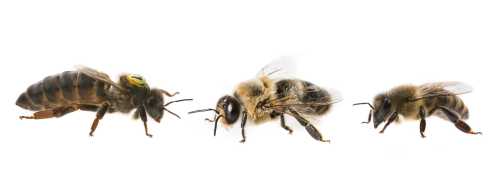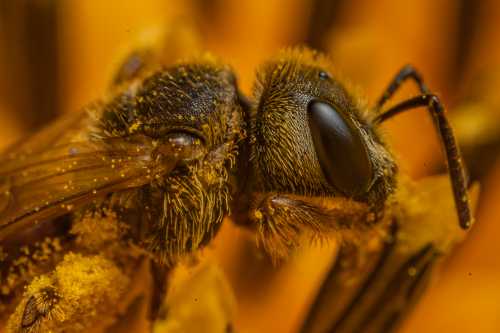The Roles Of Worker Honey Bees
Question:
What are the different jobs of worker honey bees?
The short answer is:
Worker honey bees perform a wide variety of roles from cleaning and maintaining the nest, tending the larvae (nursing), foraging and making honey - and more besides.
The Roles Of Workers In The Honey Bee Colony
Most people are aware that there are three different types of bee in a honey bee colony: the drones, the queen and worker bees.
The drones are all males and that their primary function is to mate with the queen to create the next generation of bees for the colony.
The honey bee queen’s main role is to lay eggs after mating with drones, and help ensure an efficient functioning colony through her various methods of communication.
But most members of a honey bee colony are workers, so what role do they play?
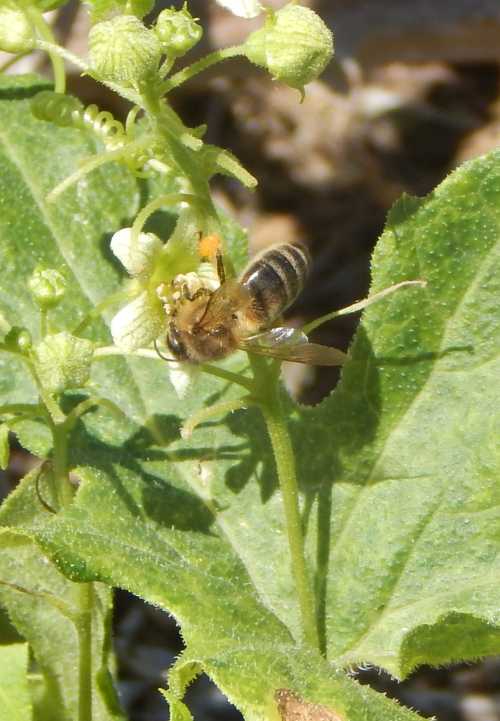 A honey bee worker in the role of foraging for the colony.
A honey bee worker in the role of foraging for the colony.Worker bees have a number of different roles within the colony, and their individual roles vary depending on their maturity and the season or time of year, which will in turn affect the needs of the colony.
Thus, the roles of worker honey bees changes throughout their lives.
"In most species of social insects, the adult workers change roles as they grow older, usually progressing from nurse to forager. This phenomenon of behavioral change with age is called 'age polyethism'."
- Thomas D. Seeley PHD
Honey bee worker castes
Honey bee workers are split into 4 broad ‘castes’: the cell cleaning caste, the broodnest caste, the food storage caste, the forager caste.
In the table
below we can see the general age group (in days) of bees within their different
castes.
| Caste | Broad Task Group | Age |
|---|---|---|
| Caste 1 | Cell cleaning caste | 0-2 days |
| Caste 2 | Broodnest caste | 2-11 days |
| Caste 3 | Food storage caste | 11-20 days |
| Caste 4 | Forager caste | 20+ days |
However,
these are broad descriptions and do not cover the many activities of the honey
bee worker.
In the spring and summer, with the growth in bee numbers in the colony, the focus is on accumulation of resources (nectar and pollen) for both the larvae and for worker bees, and for the care of the developing larvae.
During this period, honey bee workers exhibit specialization in their
roles, enabling the whole superorganism to function more efficiently.
In winter,
with fewer bees and the colony remaining in the nest or hive, survival is the
most important challenge and worker bees in a sense, become generalists in their tasks.
It must also be remembered that a worker bee will only live for about 5 – 7 weeks in summer, but may live for 4 months or more in winter.
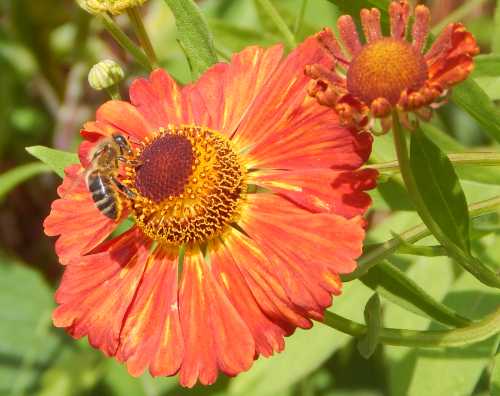
Specialized roles of worker honey bees
What roles do worker honey bees undertake through the ‘growth’ months of spring and summer?
From the table below we can see that worker bees perform a number of tasks over several days in their development, although not all bees will necessary carry out all roles.
For example, not all workers take a turn at being a ‘guard bee’.
| Worker Age In Days | ||||
|---|---|---|---|---|
| Task | 0-2 | 2-11 | 11-20 | 20+ |
| Cleaning cells | ||||
| Feeding brood | ||||
| Capping brood | ||||
| Trimming cappings | ||||
| Attending queen | ||||
| Grooming nestmates | ||||
| Feeding nestmates | ||||
| Ventilating | ||||
| Shaping comb | ||||
| Removing debris | ||||
| Receiving nectar | ||||
| Concentrating nectar | ||||
| Storing nectar | ||||
| Capping honey | ||||
| Packing pollen | ||||
| Guarding | ||||
| Foraging | ||||
In the early days of the bee’s development, activities are focused in the center of the nest, gradually performing more duties throughout and on the nest periphery until finally a worker bee becomes a forager, from around 20 days old on average.
As foragers, these older bees have 'riskier' roles (due to potential exposure to predators and accident) whilst they collect the nutritional requirements of the colony: water; pollen; nectar.
Did you know?
The queen is the chief egg-layer in a colony, but sometimes, workers lay eggs. Such behaviours are 'policed' by other workers.
Resources
- Seeley, Thomas. (1982). Adaptive significance of the age polyethism schedule in honeybee colonies. Behavioral Ecology and Sociobiology. 11. 287-293. 10.1007/BF00299306.
- Johnson BR. Division of labor in honeybees: form, function, and proximate mechanisms. Behav Ecol Sociobiol. 2010;64(3):305-316. doi:10.1007/s00265-009-0874-7
- Moore, Allen & Breed, Michael & Moor, Mary. (1987). The guard honey bee: ontogeny and behavioural variability of workers performing a specialized task. Animal Behaviour. 35. 1159-1167. 10.1016/S0003-3472(87)80172-0.
Wacky Fact!
Did You Know?
Male honey bees (drones)
have no father, but they do have a grandfather!
Does that sound impossible? Read:
If you found this page helpful or interesting, I'd really be grateful if you would share it with others - if not this page, perhaps another, such as Gardening For Bees.
Thank you so much :) .
